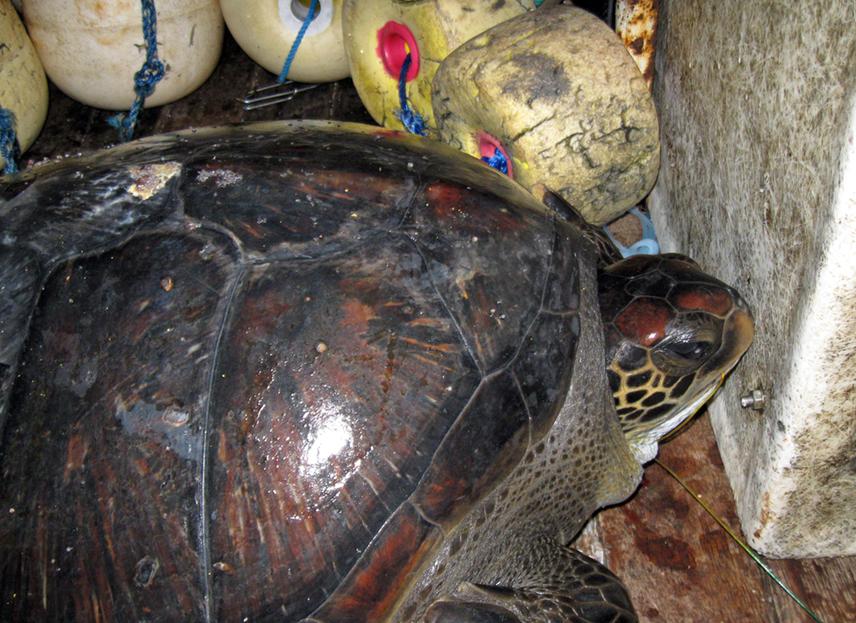Social media video featuring the project.
The sharks of Peru in numbers
29 Sep 2008 Chimbote, Peru, Central and Latin America Turtles
To reduce bycatch by finding the best way to spatially separate sea turtles from longliners and to minimize post-release mortality by applying the best handling and release protocols.

Since 2002 GTM-Peru have monitored sea turtle bycatch in Peru and have catalogued hundreds of turtles that have been bycaught in longline gear, identifying their species (green turtle Chelonia mydas, loggerhead turtle Caretta caretta, olive ridley Lepidochelys olivacea and leatherback turtle Dermochelys coriacea), size distribution and types of interactions with the gear.
However, we need to move beyond simply monitoring the turtle-fisheries interaction and build the capacity of the vessel captains and crew members to reduce bycatch rates and improve resuscitation techniques, which in turn will maximize post-hooking survival rates. Turtles usually are brought on-board by being hoisted up by the line on which they are hooked, a practice that produces many injures, particularly among turtles that are deep hooked in the throat. Moreover, to recover hooks fishermen may at times employ non-appropriate dehooking techniques that highly increase the post-released mortality.
The project’s aims are to reduce bycatch by finding the best way to spatially separate sea turtles from longliners and to minimize post-release mortality by applying the best, most up-to-date handling and release protocols. We will work on-board longline vessels in Peru, and will work closely with vessel captains and crew members to master the protocols. We aim to improve survival rates of sea turtles in Peru, with emphasis on threatened loggerheads, which cross the entire Pacific to forage off Peru.
Social media video featuring the project.
The sharks of Peru in numbers